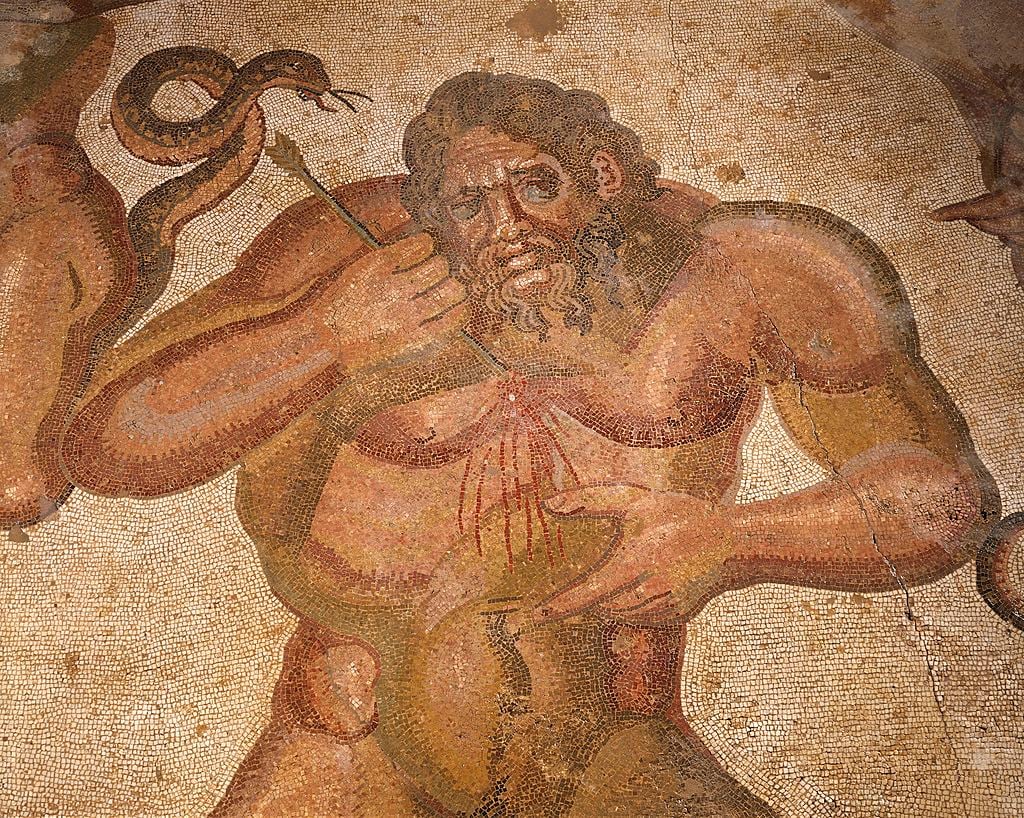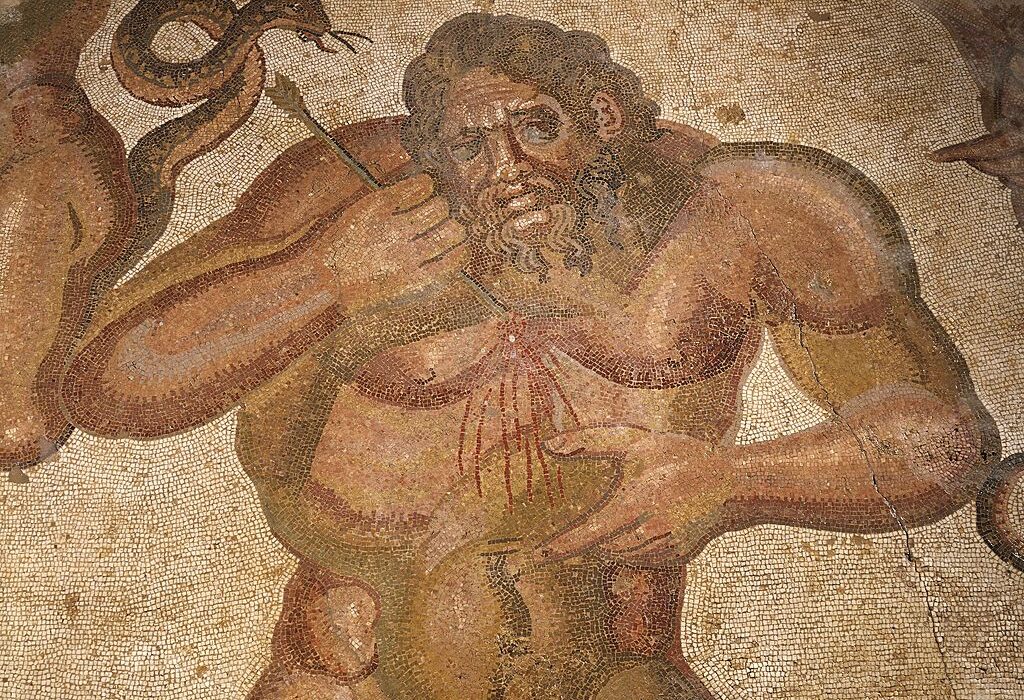News
The forgers made the mistake of basing their work on prominent archaeological examples, say two experts.

Two scholars in France and Britain are accusing the U.S. of repatriating fake Roman artifacts to Lebanon.
Djamila Fellague of the University of Grenoble claims that some eight out of nine mosaic panels the U.S. recently returned to that country are not what the authorities claim, according to a report in the Guardian.
“Eight of the nine ‘returned’ mosaic panels were fakes that [are] relatively easy to detect because the models used are famous mosaics,” Fellague told the paper. The originals are well-known works in archaeological sites or museums in Sicily, Tunisia, Algeria, and Turkey, she said. For example, one section representing an Anguiped Giant, she said, copies a section of famous mosaics in the Villa Romana del Casale in Sicily, which is not exactly an obscure source since it is a UNESCO World Heritage Site.
Another example she highlighted, a mosaic of Neptune and Amphitrite, borrows heavily from an original that has been in the collection of the Louvre Museum in Paris since the mid-19th century, after it was found in Constantine, Algeria, according to her.
“I think the District Attorney’s office’s mission is colossal and that through their investment in the fight against the trafficking of antiques, they have succeeded in raising awareness,” Fellague said in an email. “I only hope that this is an isolated case.”
“From the point of view of the researcher that I am, this subject raises the question of the place of science in certain police investigations concerning archaeological artifacts,” she added, saying that it’s unclear what expertise from researchers may have been used in the D.A.’s investigation.
A mosaic of the athlete Dionysus that is among those returned to Lebanon by the Manhattan District Attorney’s Office. Courtesy Manhattan District Attorney.
Only one example was forged from an original from Lebanon, according to Fellague, a familiar depiction of Bacchus in the collection of the National Museum in Beirut.
Another expert, University of Cambridge guest lecturer Christos Tsirogiannis, also found the returned works unconvincing. “Even if you are not an expert, if you put the fake next to the authentic mosaic, you see how similar they are, but also how the quality is actually not that good,” Tsirogiannis told the Guardian. Tsirogiannis has cooperated with the Greek Police’s art squad and was part of a task force that repatriated antiquities from museums including the Getty.
Manhattan District Attorney Alvin Bragg touted the repatriation in a September 7 press release, collectively valuing the antiquities at $9 million. He added that the majority of them came from a criminal investigation into accused trafficker Georges Lofti, subject of an international arrest warrant, while others came in at the hands of smugglers Giovianni Franco Becchina, Robin Symes, and Jerome Eisenberg.
A D.A. spokesman denied the accusations to the Guardian. “In order for these antiquities to be repatriated, a court had to evaluate our evidence, which included expert analysis about their authenticity and significant details about how they were illegally trafficked. The court found based on the evidence—which these individuals do not have—that the pieces are authentic.”
During District Attorney Bragg’s tenure, its Antiquities Trafficking Unit claims to have recovered nearly 850 antiquities stolen from 27 countries and valued at more than $190 million. Since its creation, said the D.A.’s office, the unit has recovered more than 4,500 antiquities stolen from 30 countries, valued at more than $410 million.
More Trending Stories:
A Shipwreck Off the Coast of Colombia May Hold $20 Billion Worth of Treasure
Hot! How a Backyard Photographer Captured Some of the Most Detailed Images of the Sun
Chinese Artist Chen Ke Celebrates the Women of Bauhaus in a Colorful, Mixed-Media Paris Debut
A Centuries-Spanning Exhibition Investigates the Age-Old Lure of Money
Meet the Woman Behind ‘Weird Medieval Guys,’ the Internet Hit Mining Odd Art From the Middle Ages
Conservators Find a ‘Monstrous Figure’ Hidden in an 18th-Century Joshua Reynolds Painting
A First-Class Dinner Menu Salvaged From the Titanic Makes Waves at Auction
The Louvre Seeks Donations to Stop an American Museum From Acquiring a French Masterpiece
Follow Artnet News on Facebook:
Want to stay ahead of the art world? Subscribe to our newsletter to get the breaking news, eye-opening interviews, and incisive critical takes that drive the conversation forward.

